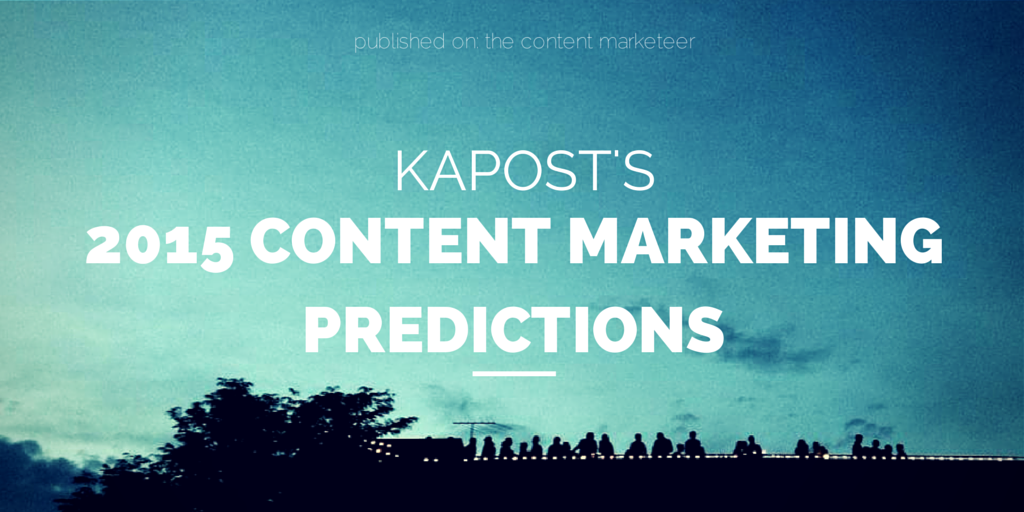
Each year, as another Q4 comes to a halt, business people are forced to look back at what they did right and wrong over the past year, and start planning for the next.
It’s called professional reflection, and most of us do it while in a food coma after stuffing our faces with turkey, ham, and pie over the holidays.
This season, I urge you to consider some of the following content marketing predictions, based on a year’s worth of research. Hopefully they’ll help you sketch out your overarching 2015 content marketing strategy.
One thing’s for certain, it’s going to be another dynamic, adaptive year.
Kapost’s 2015 B2B Content Marketing Predictions
1) Whitepapers will be created more often, and used more frequently, throughout the funnel.
Executives are on an eager hunt to find the content asset that drives the most revenue and serves as many channels, products, and regional offices as possible. Our prediction? That will be the whitepaper. Study after study suggests that whitepapers are the type of content “decision-makers” consume. Interactive and playful content spurs engagement, but these data-heavy and analytical assets close deals.
B2B buyers like whitepapers because they’re credible resources to bring into a meeting with an exec (whereas it might feel unnerving to base a purchase decision on a funny infographic). And salespeople like whitepapers because they showcase product value propositions and competitive analyses in a data-based way.
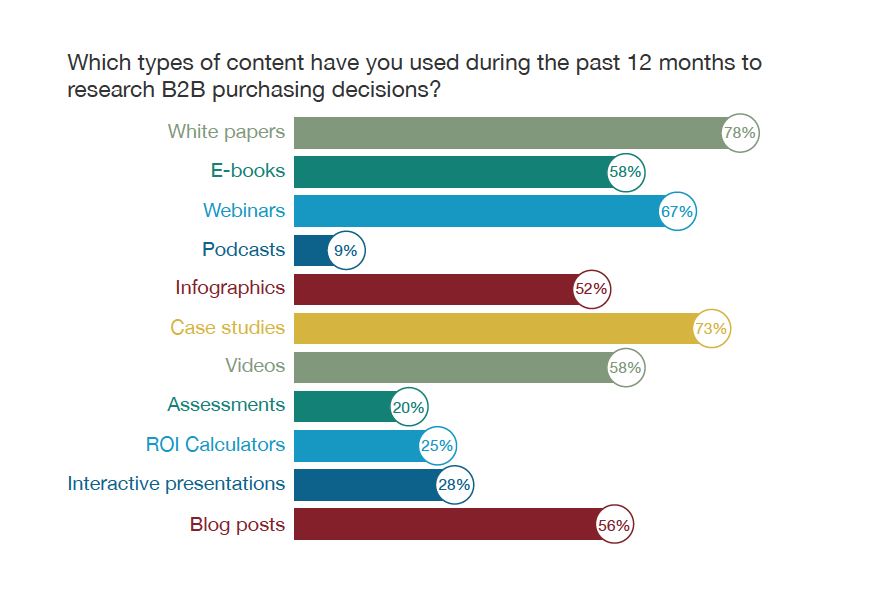
And here’s a guide for creating a good whitepaper.
2) Big Data analytics will start to replace “gated assets.”
By 2015, Big Data will become more colloquial, possibly starting to reduce the need for gated content assets. Content will still be the driving force behind buyer engagement—but the process will change. After all, we know consumers hate entering their information into a form, and marketers are aiming to serve the buyer.
Big Data is our leading candidate for dethroning form submissions as the best way to get and leverage buyer information, once and for all.
3) LinkedIn will continue to dominate industry and marketing news. And will be the dominant social channel for content distribution.
In 2014, LinkedIn emerged as the #1 platform for professional content sharing. In 2015, this will not only still be true, but amplified. LinkedIn is making powerful strategic moves suggesting that it wants to be a noteworthy player in the marketing technology space: it bought Bizo, it launched “posts,” and it now has featured news.
Curious which basket you should drop you social budget? We’re thinking LinkedIn.
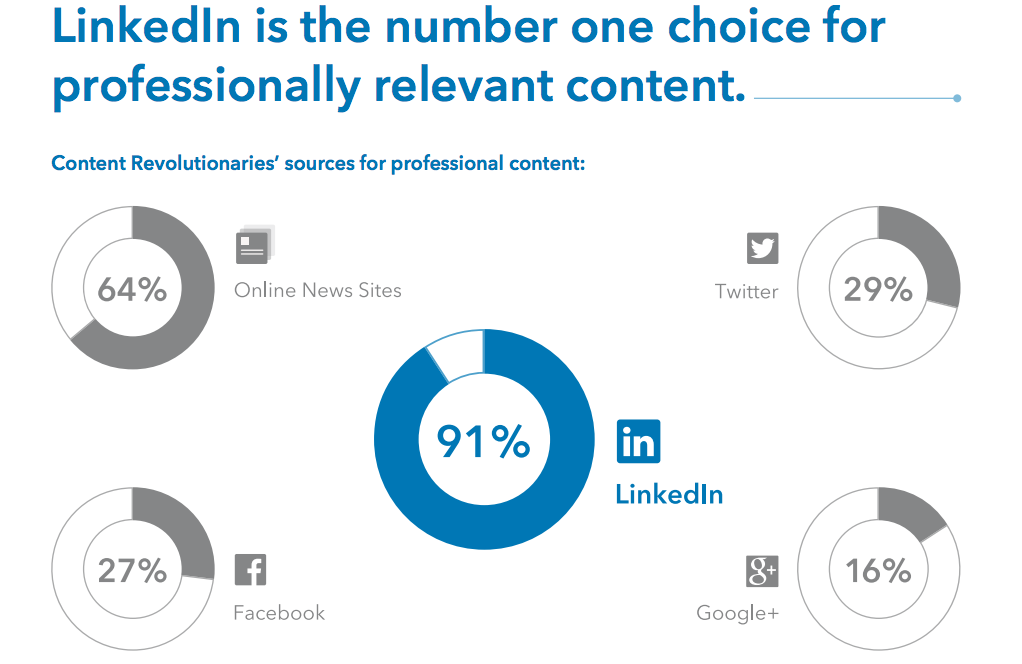
4) Facebook’s influence with respect to B2B marketing strategies will dissipate.
Since 2013, B2B marketing’s use of Facebook has diminished. The platform has become a general news aggregator, with no apparent niche. Photos are on Instagram, messaging moved to SnapChat, status updates are passé, and I’m not sure “likes” or “fans” were ever successfully monetized. Copyblogger even “killed its Facebook page” because of that. Therefore, marketers are finding little need to leverage the platform for anything, except maybe targeted ads.
5) There will be significant rise in “VP of Content Marketing” roles.
As content marketing becomes more of a staple in marketing strategy, more titles will reflect the domain. Already, content marketing titles are on the uptick, with a more than a 5% increase in job titles over the past year. We predict this will increase into 2015, with upwards to 10% increase in job titles for senior level marketers. Specfically this will mean that people who once were “VP of Marketing” might become “VP of Content and Marketing”
6) There will be a decline in marketing technology options.
Remember Scott Brinker’s 2014 marketing technology supergraphic? That won’t get bigger in 2015. Consumers and marketing technologists are tired of struggling to manage a complicated marketing SaaS stack. Their fed up with “additional tools,” “new platforms,” or the “next best thing.”
In 2015, we predict a contraction of marketing technologies. Some will go out of business, others will merge. But regardless, there will be fewer platforms and more technology efficiency.
We hope it moves from this:
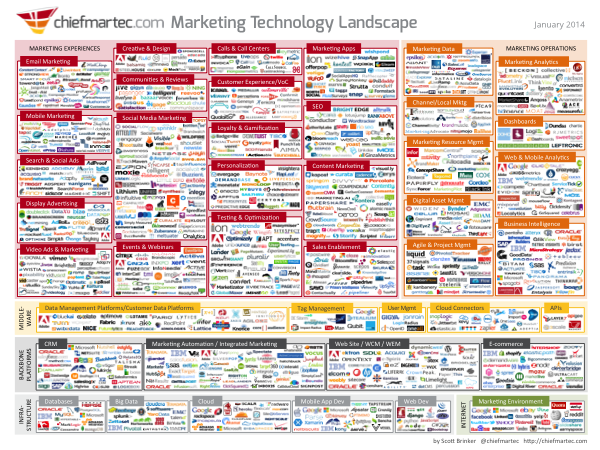
To this:
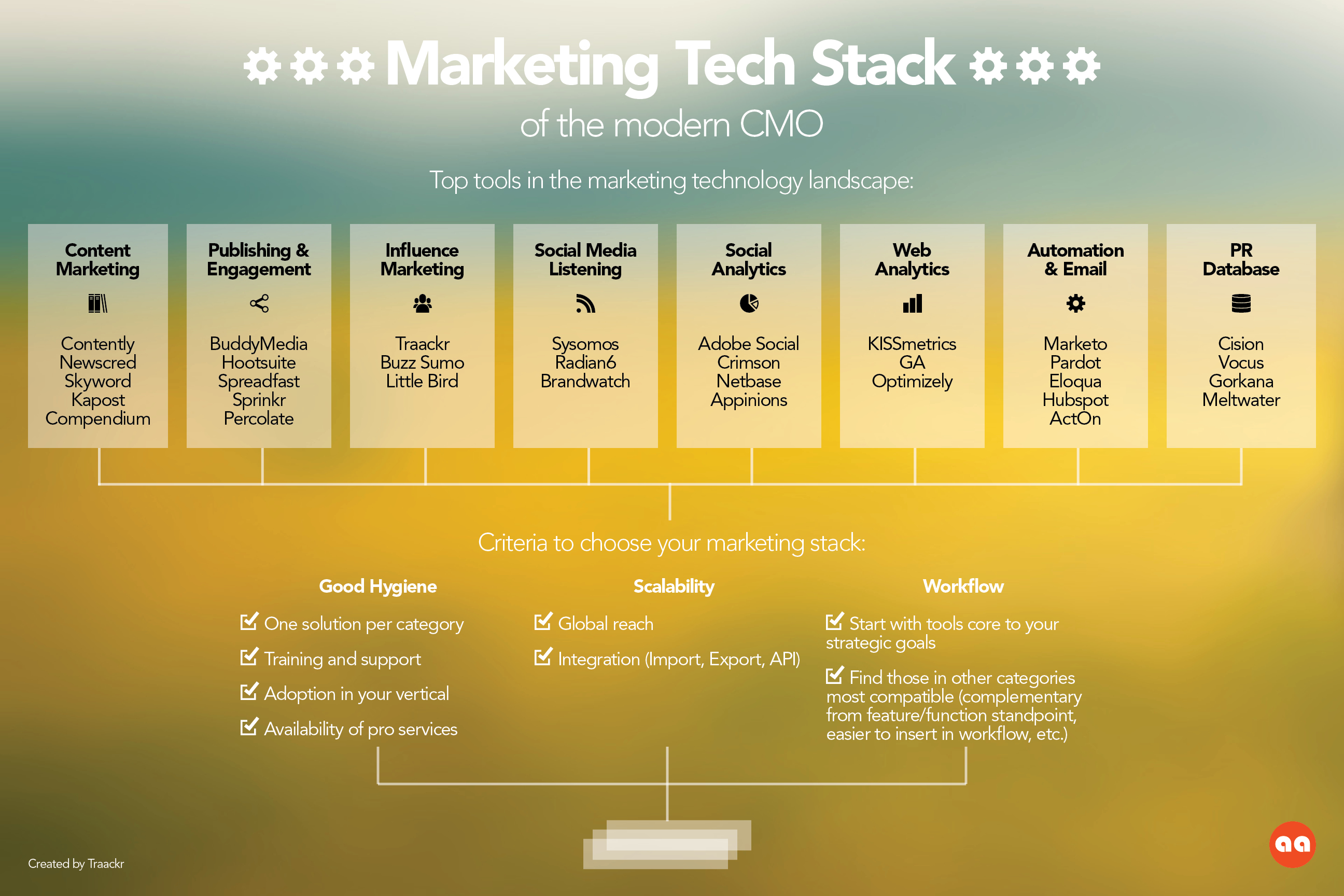
7) Wearable technology will affect marketing tactics.
By the end of 2015, wearable technology won’t be making headlines as the “newest trend,” but I’ll be damned if it’s not on your wrist (or other body part). Though hard to predict, there will undoubtedly be marketing ramifications as a result of the proliferation of wearable technology throughout the masses. Perhaps it will become a new content channel? Or perhaps it will be able to sense your chemical reactions to certain content messages? Who knows.
“What does marketing look like when the Internet surrounds us like the air that we breathe? Fascinating to think about,” says Mark Schaefer, Executive Director of Schaefer Marketing Solutions, in Lee Odden’s post. We agree.
8) “Channel-based” marketing teams will finally start talking to each other, and work collaboratively.
Marketing teams are just starting to learn the value of cross-departmental visibility, and how it affects the unity and power of buyer conversations. In 2015, CMOs will make it a priority to establish processes to ensure that each marketing team member has access and visibility into what the other is doing.
Brian Solis, Principal Analyst at Altimeter Group, says it best in Lee Odden’s post: “I’d love to say that by 2015 we will truly see digital strategies that are integrated across social, mobile, advertising, marketing, comms, et al. But, we won’t. What we will see though is a more conscious effort to bring disparate groups to the table to learn how to collaborate across screens, channels, and moments of truth to deliver ONE experience to customers wherever they are in the lifecycle.”
9) Jesse Noyes will be nominated King of Content. Once and for all.
Oh wait. Well maybe not this last one. Unless someone really big names him that. Like Joe Pulizzi, Stephen King, or Michelle Obama. But hey, we can always hope.

